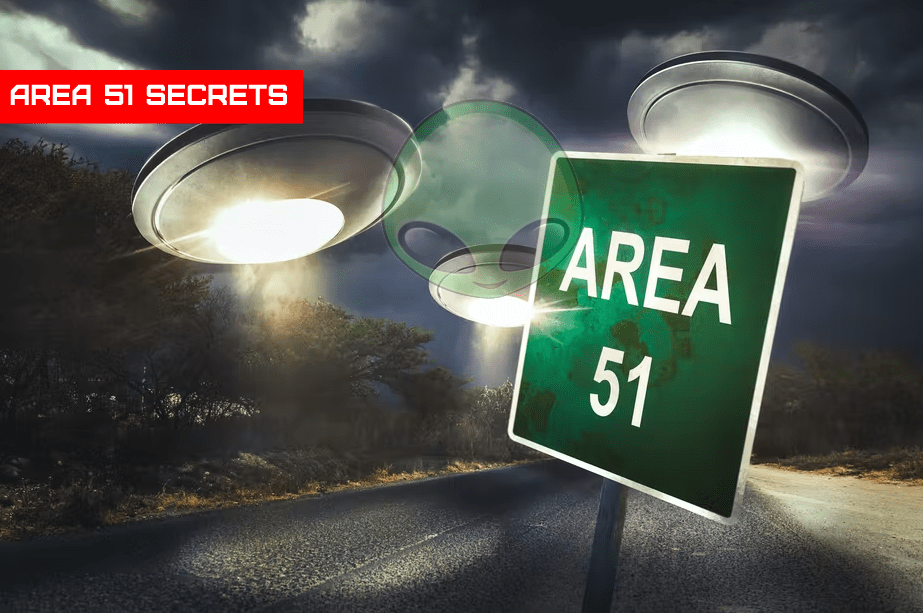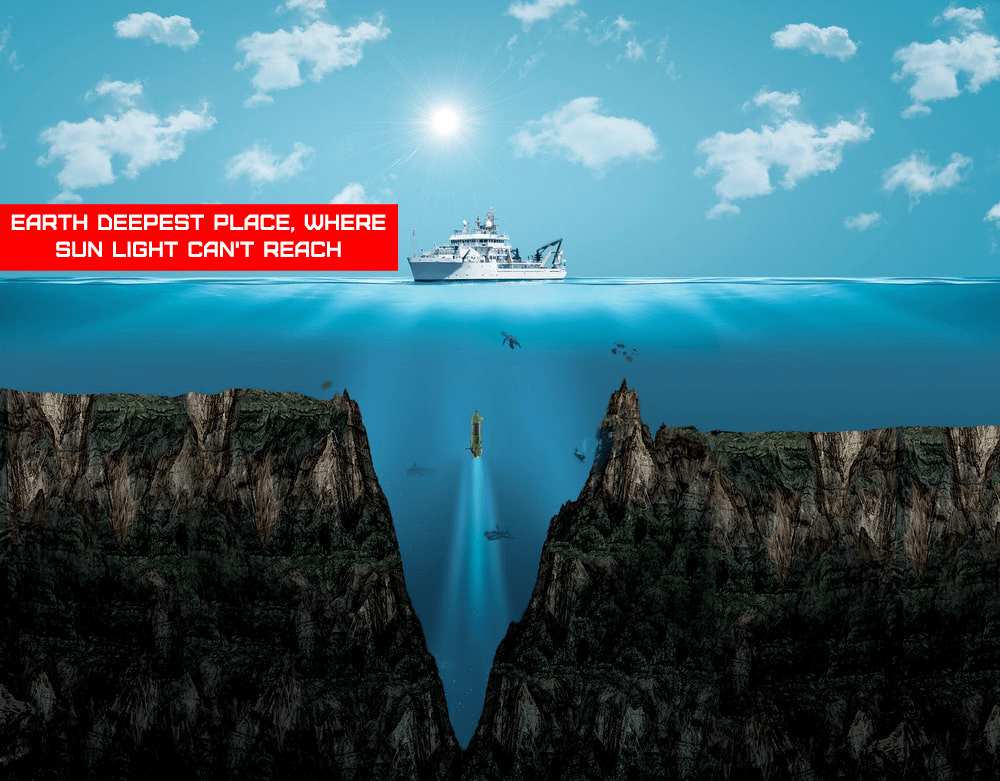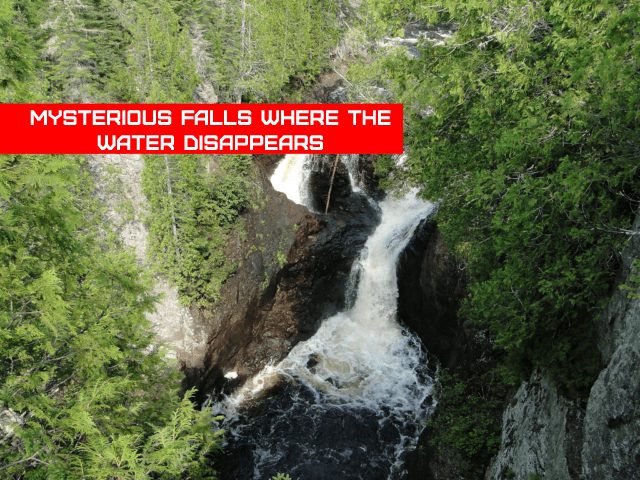Life, with all of its intricacies, has one simple feature in common: it spreads. Plants, animals, and microorganisms have inhabited nearly every corner of our planet.
Life on Earth Naturally Evolved
LIFE on Earth is widely assumed to have evolved spontaneously rather than being produced.
We may never be able to prove how life began on our planet, but of the many possibilities given thus far,
Bacteria, Archaea, and Eukariota are the three known kingdoms of life. They are thought to have descended from a Last Universal Ancestor, often known as the Last Universal Common Ancestor or LUCA (LUCA).
What Researcher’s Says?
Louis Pasteur Says:-
That life does not emerge spontaneously.
Louis Pasteur’s investigations in the 1840s established that spontaneous production of living entities did not occur. He discovered that by cleaning bottles and containers, he could limit undesired growths such as moulds and pathogens.
If you’ve heard of ‘pasteurised milk,’ it’s because of Louis Pasteur’s scientific determination. In other words, living things are the only way for other living things to exist, and life forms such as germs (or literally any living entity) do not develop on their own.
Scientists now know that the spontaneous origin of life never occurs. Nonetheless, this evolutionary assumption of the spontaneous emergence of life has persisted for nearly 170 years. Why would scientists continue to promote a scientific principle that is known to be false? Simply said, naturalism (and, eventually, evolution) lacks an explanation for the beginning of life without this narrative. As a result, we are still indoctrinated with the “primordial-soup-emergence-of-life” drivel in order to sustain the ideas of evolution.

The problem with Louis Pasteur’s experiment is that it invalidates biogenesis, not abiogenesis.
Biogenesis is the theory that full-fledged lifeforms such as maggots or bacteria can emerge spontaneously. It is also known as spontaneous generation.
Abiogenesis is an entirely different beast. It is the belief that some sort of primordial life can arise naturally and subsequently evolve into bacteria. The process is most likely simple chemistry to complicated chemistry to chemistry complex to self-replicating or metabolising complex to life-like complex to proto-life and finally life.
As a result, the research cannot even prove abiogenesis!
Charles Darwin Says:-
Anaximander, the guy who originated the term “evolution” to describe the process for which he discovered evidence over 2,500 years ago, was (right) sure fish had somehow evolved into many different mammalian species.
Charles Darwin postulated a fresh method of evolution, speciation via natural selection, about 2,350 years later.
While natural selection is a part of the “How does evolution work?” problem, isolated reproduction populations are the biggest predictor of the chance of speciation, and there are two key factors (out of seven identified thus far) that are each better than natural selection.
Science isn’t even in the business of proving anything. That’s how math works. Science can only provide tentative explanations for collections of facts.
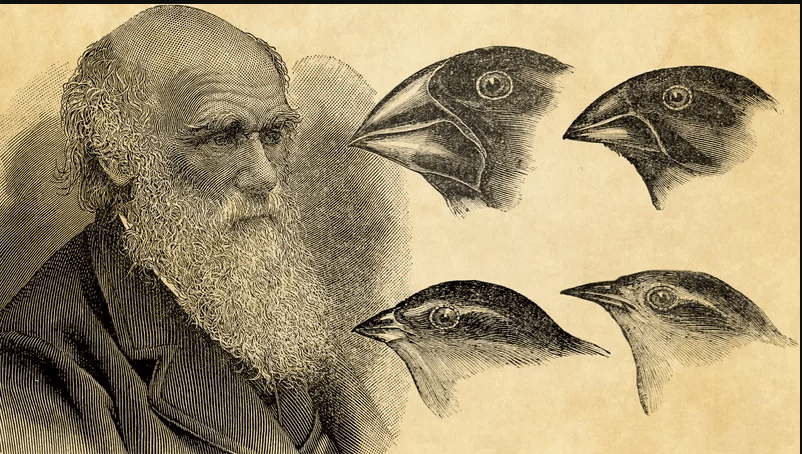
It is a reality that evolution occurs all the time.
It is true that species have arisen as a result of evolution.
The scientific Theory of Evolution is the best tentative explanation of evolution’s plainly provable facts.
Alexander Oparin Says:-
Oparin began by researching several panspermia hypotheses, including those of Hermann von Helmholtz and William Thomson Kelvin, but he was ultimately interested in how life began. He claimed as early as 1922 that:
1. A living thing and dead stuff have no fundamental distinction. The complex combination of manifestations and attributes that characterise life must have evolved as part of the process of matter evolution.
2. Oparin proposed that the baby Earth had a powerfully reducing atmosphere comprising methane, ammonia, hydrogen, and water vapour, based on the recent discovery of methane in the atmospheres of Jupiter and the other large planets. These, he believed, were the raw elements for the evolution of life.
3. There were initially only simple solutions of organic matter in Oparin’s formulation, the behaviour of which was regulated by the properties of their component atoms and the arrangement of these atoms into a molecule structure. However, he claims that as molecules grew in size and complexity, new features emerged, and a new colloidal-chemical order emerged as a replacement for simpler interactions between and among organic chemicals. The interactions of these more complicated molecules defined these additional features.
4. According to Oparin, this approach highlighted biological orderliness. According to Oparin, the form of material organisation characteristic of modern-day living beings is decided by competition, cell development speed, survival of the fittest, struggle for existence, and, lastly, natural selection.
5. Oparin described how he believed basic organic compounds organised into minuscule localised systems from which early living beings could have evolved. He highlighted work by de Jong and Sidney W. Fox on coacervates, as well as research by others, including himself, into organic compounds that might spontaneously form droplets and layers in solution. Oparin proposed that many forms of coacervates may have evolved in the Earth’s primordial water and then been subjected to a selection process that resulted in life.

Stanly Miller Says:-
The Miller–Urey experiment was a chemical experiment that explored the chemical origin of life under circumstances assumed to exist on the early Earth at the time (1952).
At the time, the experiment corroborated Alexander Oparin’s and J. B. S. Haldane’s claim that hypothetical prehistoric Earth circumstances favoured chemical reactions that generated more complex organic chemicals from simpler inorganic substrates.
Miller Urey Expirement:
Water (H2O), methane (CH4), ammonia (NH3), and hydrogen were utilised in the experiment (H2). The chemicals were all enclosed inside a sterile 5-liter glass flask connected to a half-full 500 ml flask of water. The smaller flask’s water was heated to cause evaporation, and the water vapour was permitted to enter the larger flask. In the larger flask, continuous electrical sparks were shot between two electrodes to simulate lightning in the water vapour and gaseous mixture, and the simulated environment was then cooled again such that the water condensed and dripped into a U-shaped trap at the bottom of the contraption.
The solution gathered at the trap turned pink after a day, and after a week of continuous operation, the solution was deep crimson and turbid. To prevent microbiological contamination, the boiling flask was withdrawn and mercuric chloride was added. The process was stopped by adding barium hydroxide and sulfuric acid, and the impurities were removed. Miller detected five amino acids in the solution using paper chromatography: glycine, -alanine, and -alanine were positively recognised, but aspartic acid and -aminobutyric acid (AABA) were less confident due to the spots being faint.
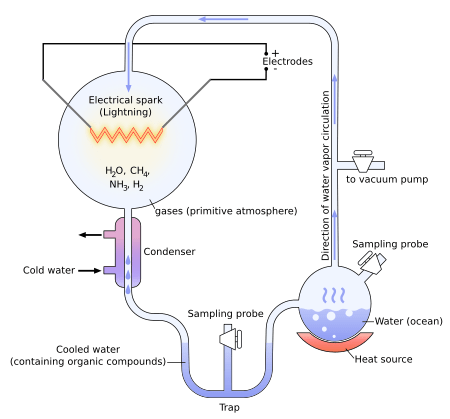
Stanley Miller recalled his lifetime experiments after his original study in a 1996 interview, saying, “Just turning on the spark in a simple pre-biotic experiment will generate 11 out of 20 amino acids.”
Miller and Urey’s former student Jeffrey Bada, a professor at UCSD’s Scripps Institution of Oceanography, continued to manage the original experiment in 2017. The apparatus used in the experiment was on exhibit at the Denver Museum of Nature and Science in 2013.
Theory of Panspermia
Life on Earth emerged quickly after the planet cooled, and the planet is 4.5 billion years old. Given that the universe is nearly three times as old, there was a long period of time during which life could have arisen elsewhere and then travelled to Earth via natural or artificial means.
Extremophiles are organisms that can survive and even thrive in conditions that were previously declared inhospitable to life. Water bears can survive in space.
Panspermia holds that life (or molecules of protolife) originated elsewhere and eventually arrived on Earth via asteroids or interstellar dust. The hypothesis does not specify where that life originated, simply that it existed someplace in the past of the Universe before arriving here.
There is currently evidence for both perspectives. On the one hand, we have life-friendly settings and fossils dating back to the early days of Earth. This appears to imply that the Earth was a chemical crucible appropriate for information-carrying molecules to collide and give rise to life as we know it. On the other hand, basic amino acid molecules have been discovered in asteroids and even interstellar gas clouds. If such an important building block of life can grow in such adverse settings, it’s possible that life began not long after the Big Bang and has slowly expanded throughout the cosmos since.
We have no idea which hypothesis is correct. And, to be honest, we’re not likely to find out any time soon.




